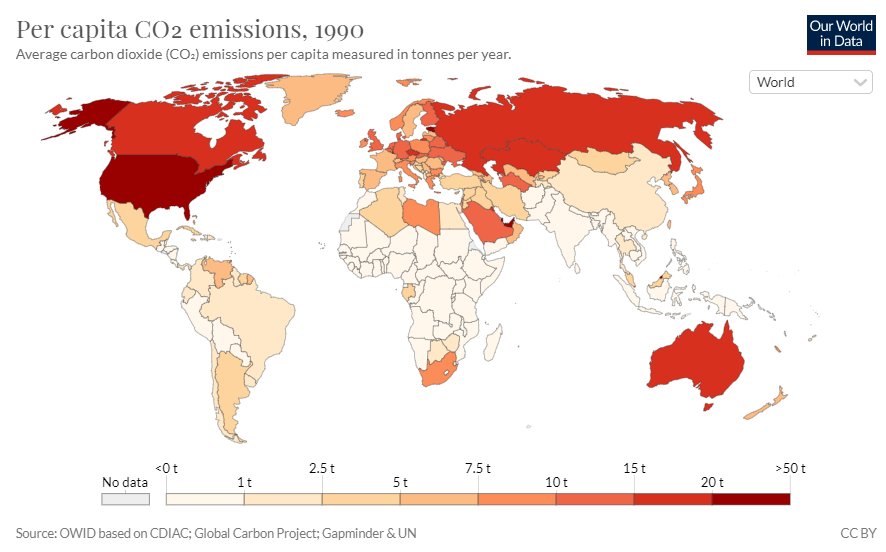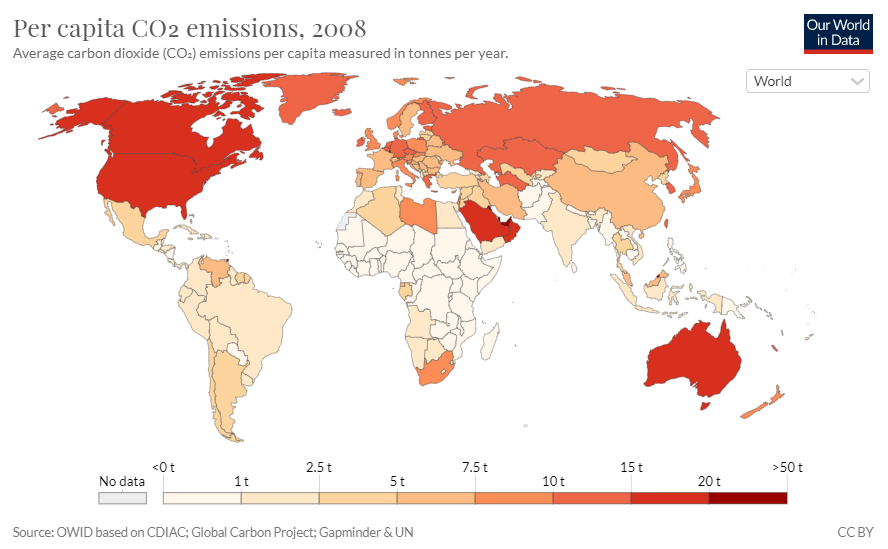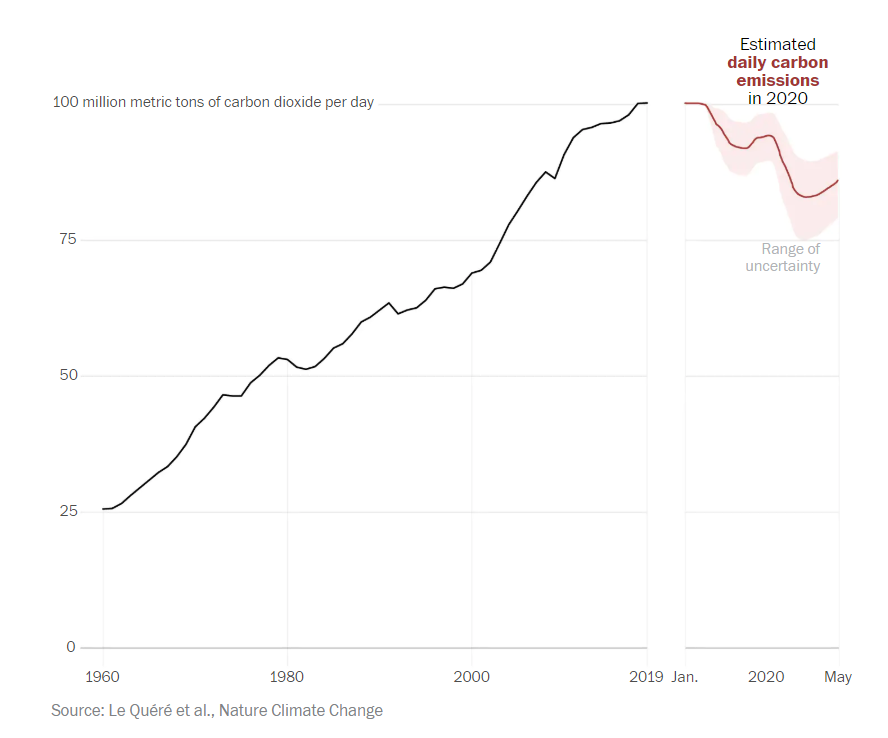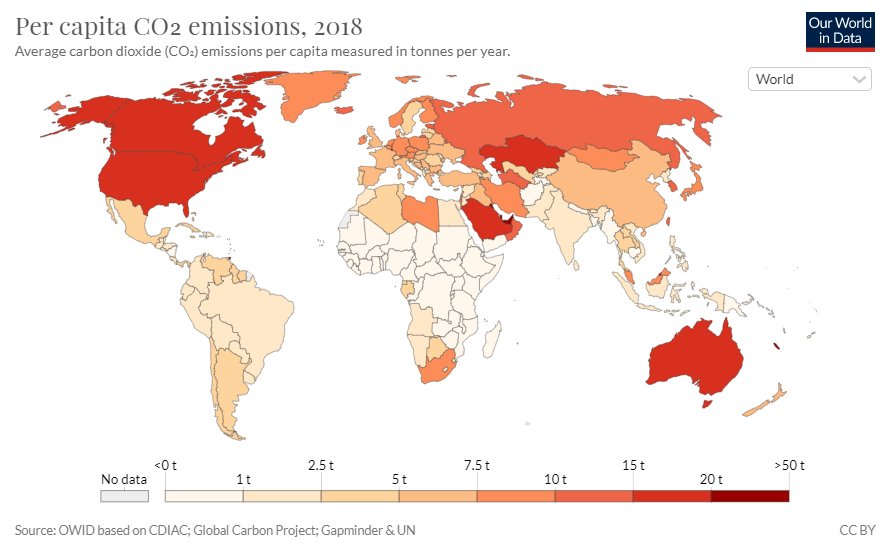
For decades the road to greener, renewable energy and the slow of climate change has been an uphill battle. The fossil fuel industry has been largely responsible for thwarting green movement global progress. As a $257 billion industry in the U.S. alone and much of the world still relying on high carbon-producing fossil fuels, large-scale change has been slow-going. Nonetheless, we haven’t given up on the goal of a cleaner planet for future generations.
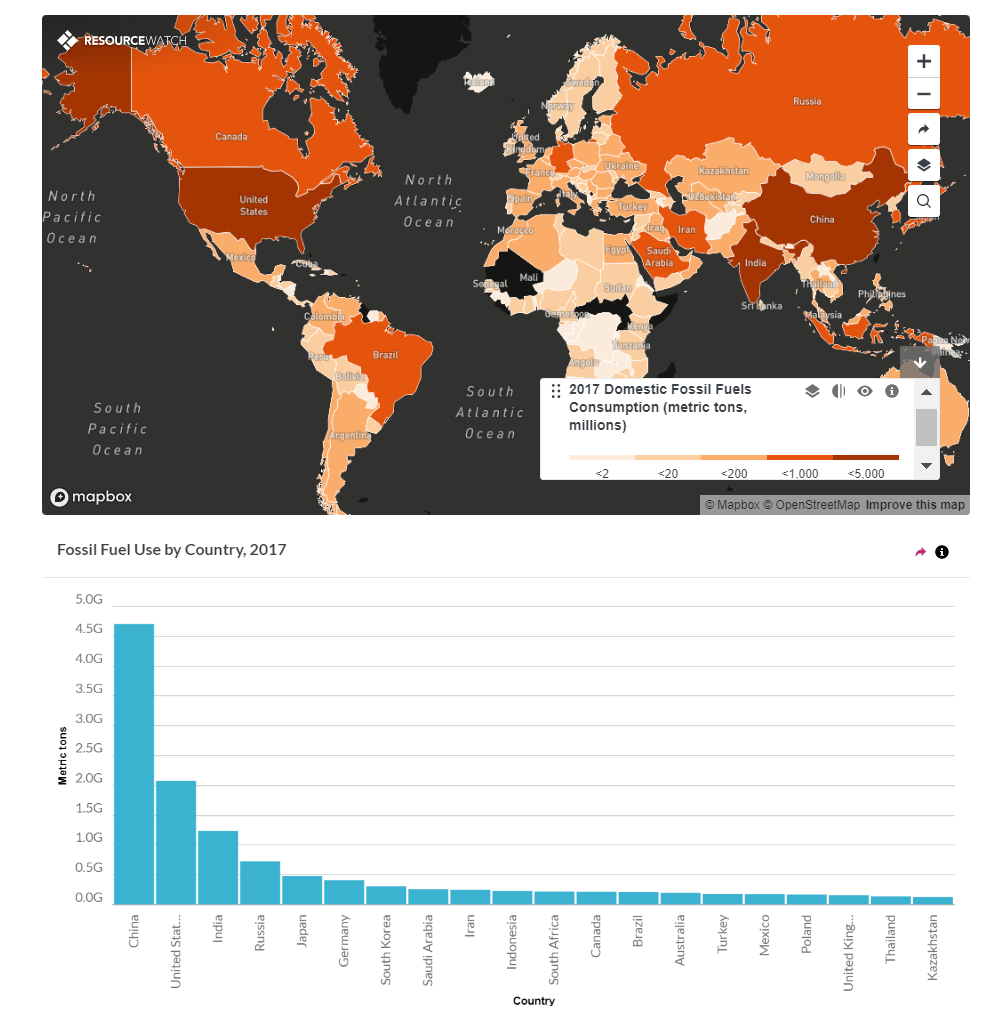
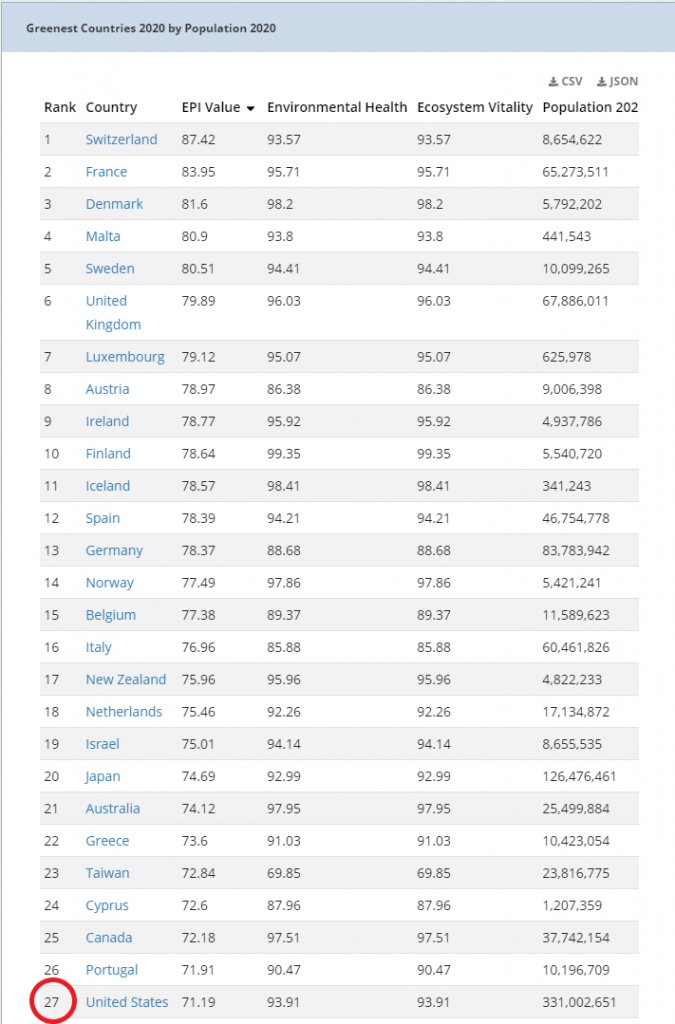
Collectively, the world has been making changes and advancements in renewable energies to reduce our CO₂ emissions in hopes of slowing and ultimately reversing climate change. Leading the way is Switzerland, currently considered the greenest country in the world, whereas the U.S. only tops in at 27th on the list.
Switzerland has made many advancements and lifestyle changes which highly contribute to their number one spot on the list. Just to name a few:
- They have no landfills and instead incinerate all trash, producing a very minimal amount of air pollution. (Caldwell, 2020)
- They’re among the top recycling countries in the world, charging for trash disposal but offering recycling for free. (Caldwell, 2020)
- Utilization of hydroelectric power as their primary total energy source. (Lakshmi, 2018)
- Large-scale protection and designation of land to national parks. (Lakshmi, 2018)
This is not to diminish any advancements of the U.S. or other countries, but the Swiss are clearly not afraid to make the difficult changes for the long-term payoff. Total energy supply from renewable and low carbon producing sources is on the rise in Switzerland as fossil fuel is being phased out. Using virtually no coal and very little natural gas, the only fossil fuel Switzerland still uses for energy supply is oil, and even that has drastically dropped. In 2013, total energy supply coming from oil dropped roughly 1,000 ktoe (kilotonnes of oil equivalent) and continued on a steady decline as the country relied more on a nuclear power vs. oil. Although not a perfect answer, this change-over undoubtedly contributed to the country’s overall environmental health. As compared to the USA and the world, you can see how this Switzerland’s changes has made an impact.
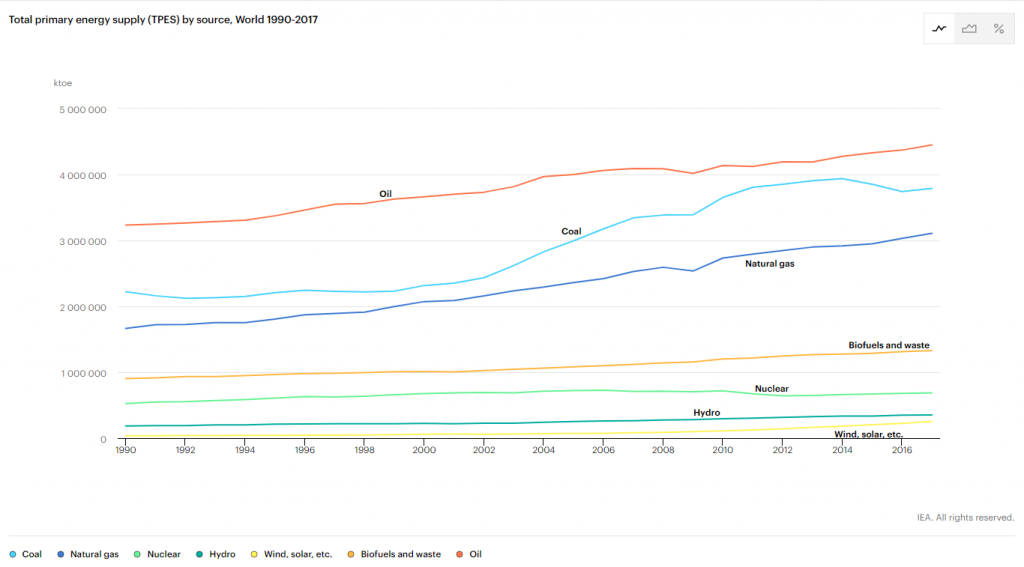
World Total Energy Supply – All Sources 
USA Total Energy Supply – All Sources 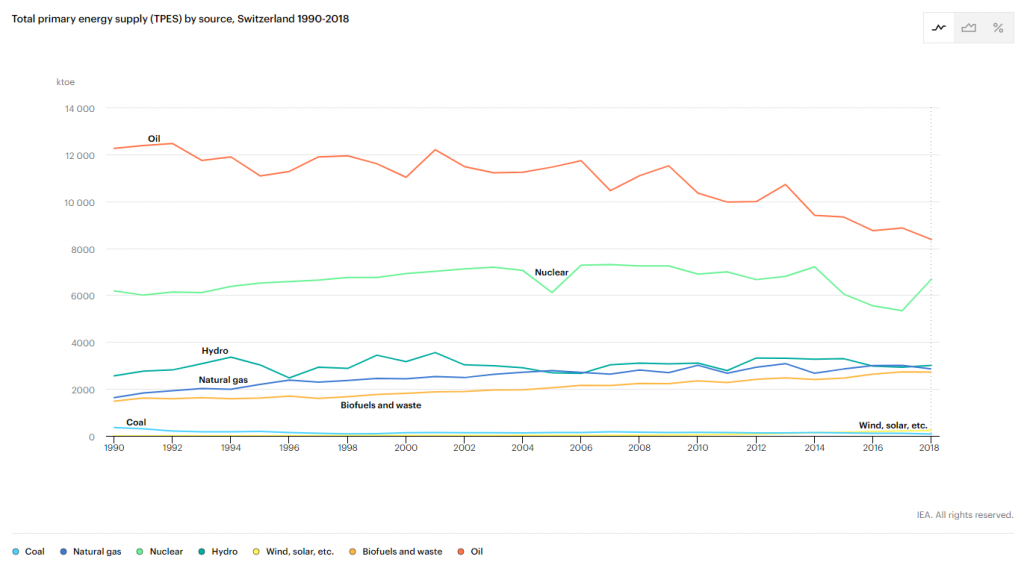
Switzerland Total Energy Supply – All Sources
Although Switzerland is leading the green movement, as renewable energies become more widely available and cost effective, their utilization is on the rise and fossil fuels are at a steady decline. The elimination of fossil fuels is not going to be the singular answer to reversing climate change, but it’s a big factor. Looking at the incline of renewable energies in the U.S. and the world, a trending projection for the future appears.

USA Total Energy Supply – Renewable Sources 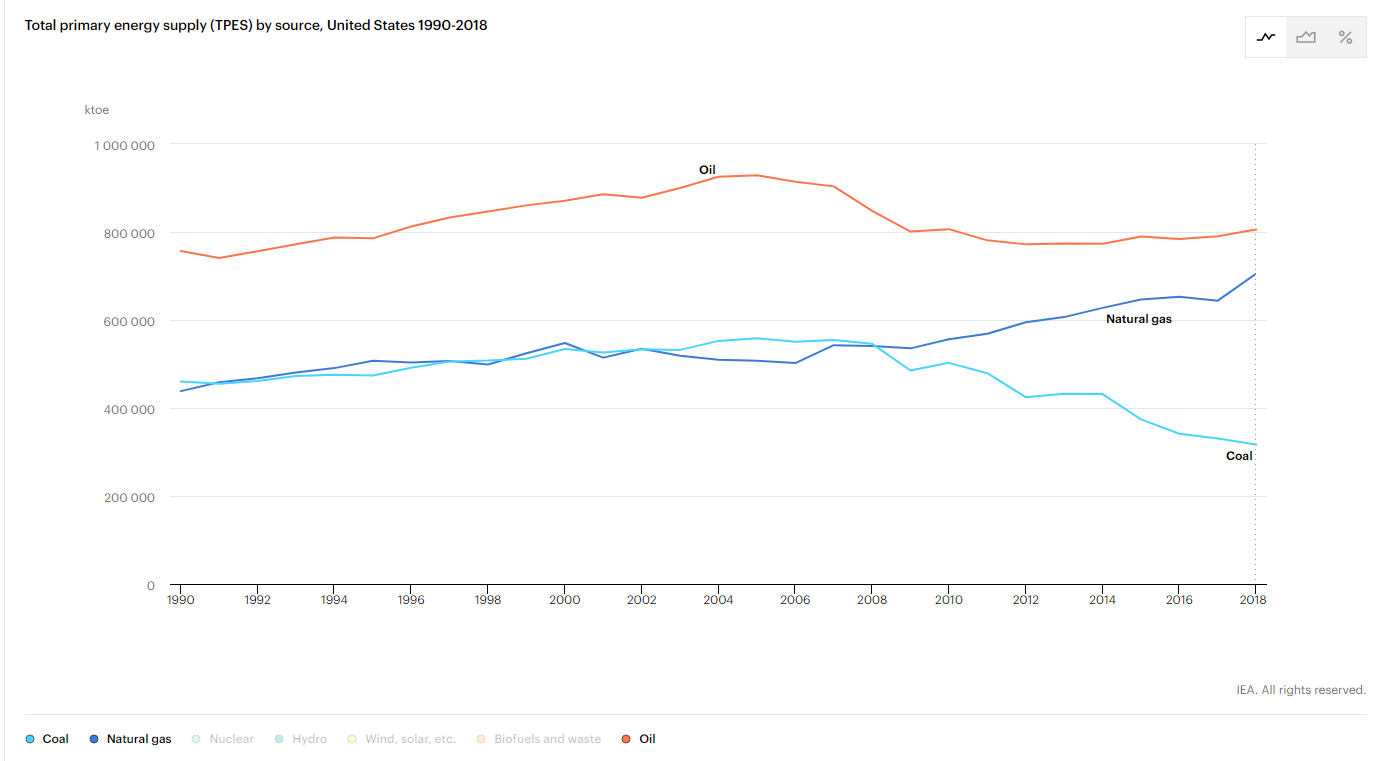
USA Total Energy Supply – Fossil Fuels 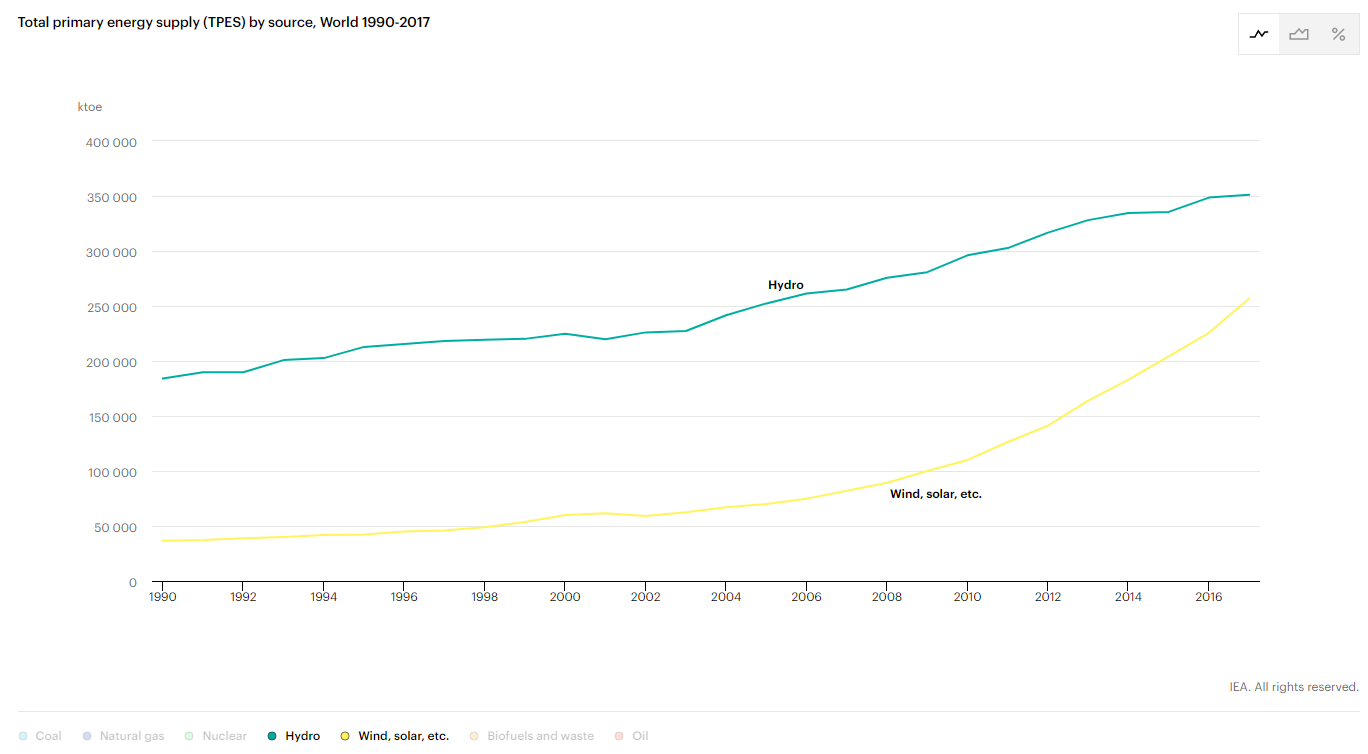
World Total Energy Supply – Renewable Sources 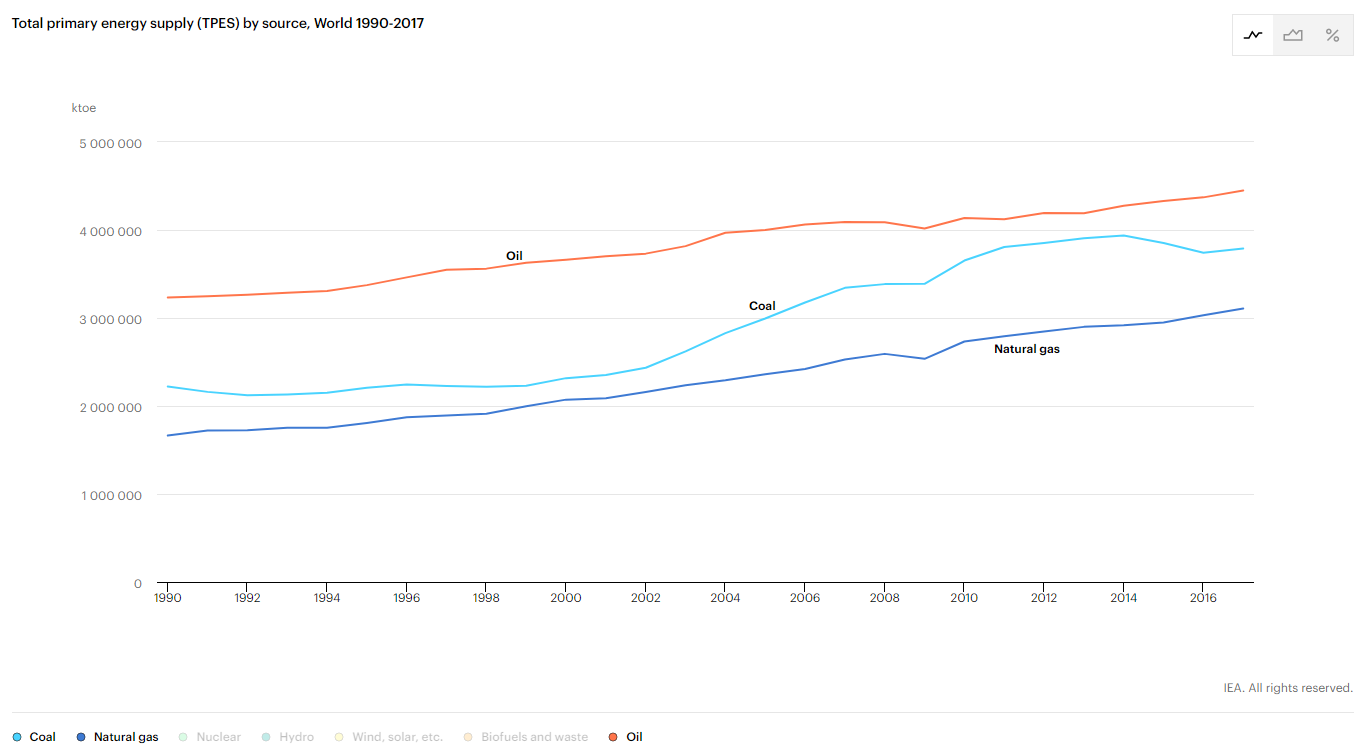
World Total Energy Supply – Fossil Fuels
Fossil fuels don’t seem to be suffering all that much according to the above depictions. The U.S., however, has drastically dropped in coal use since 2008 and coinciding with this drop, our national CO₂ emissions also decreased by over 4% that year. Over the next decade, the U.S. would go on to accomplish an 18.7% decrease in CO₂ emissions. Globally, CO₂ emissions have fluctuated greatly as under-developed countries became more robust, populations increased, and the need for clean, renewable energy was realized.
Projections from several studies and experts say that the fossil fuel industry is in trouble. A 2018 study by carbontracker.org lays out the expected peak of fossil fuels between 2020 and 2027, with a likelihood that the peak will occur in 2023. With populations growing across the world, energy demand is projected to grow 1% – 1.5%. Wind and solar energy specifically are looking at a 15-20% increase in demand. Couple this with increased government policies driven by the need to decrease emissions, air pollution, and control climate change, the rise of electric vehicle supply and demand, and the drop in cost of renewable energy, the fossil fuel industry is looking at a risky future and possible losses of $25 trillion in fixed assets.
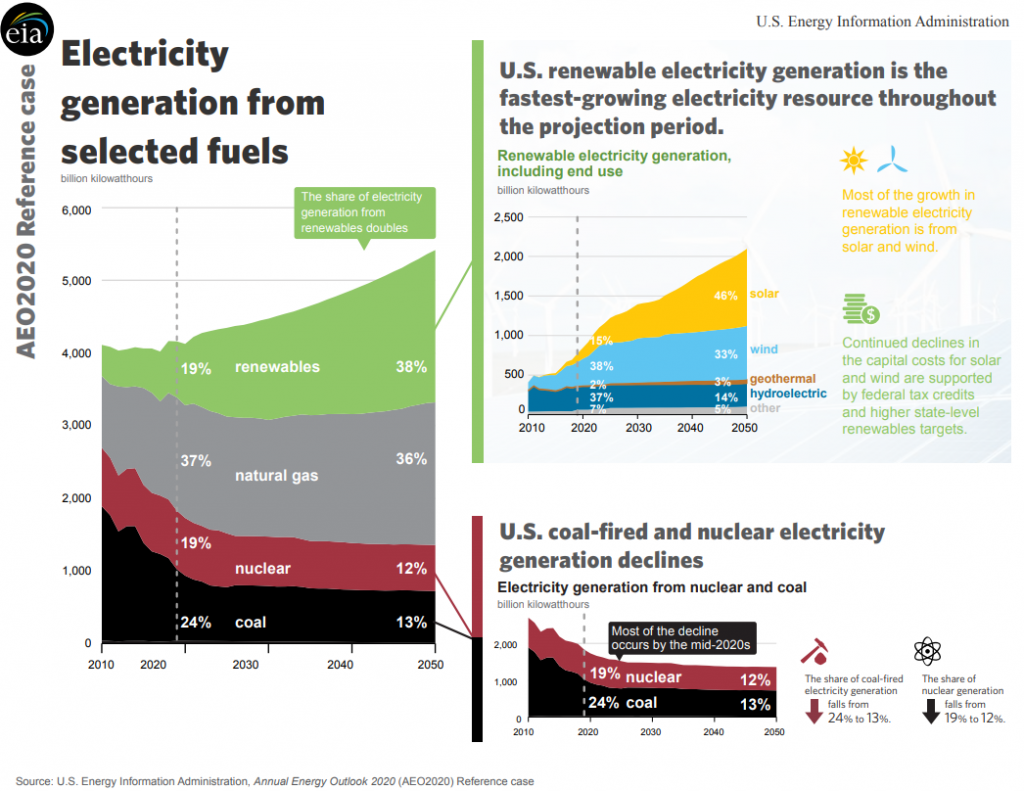
These projections are also mirrored in the U.S. Energy Information Administration’s (EIA) Annual Energy Outlook 2020 Report. In the report, one of the many projections show the growth in electricity generation from renewables and the steep fall in generation from fossil fuels.
What none of these reports have or could have accounted for was the Covid-19 pandemic that immobilized the globe in early 2020. The peak of fossil fuels was estimated to occur around 2023 originally, but ultimately, the shutdowns across the world sped up the process. With more people working from home than ever before, oil demand dropped by more than 20% compared to the 2019 high. Many sources have reported that if the economy doesn’t recover fairly quickly from the pandemic and renewable energy demand continues to rise, the demand for fossil fuels will have already peaked in 2019. If, however, the curve of our recovery is more v-shaped, the fossil fuel industry could recover demand by 2022 says a spglobal.com article.
The world all but stood still as only “essential” employees were commuting and some countries completely shut down, causing nature to reclaim metropolitan areas. Global CO₂ emissions dropped by 17% in the beginning of April during the peak of shutdowns.
For the green-minded, this was a leap in the right direction. Coupling a massive drop in CO₂ emissions, the decline of fossil fuels, and the increase in affordability and demand of renewable energy sources, we are well on our way to slowing climate change, right? While these are historic accomplishments, it’s important that we don’t live in a bubble of denial and comfort zones and also take a look at the measurable percentage of CO₂ that is still lingering in our atmosphere.
In May of this year, the amount of CO₂ in the air hit the highest average monthly value ever recorded. Measured at over 417 ppm (parts per million) and over 2 ppm over last years average of 414.7 ppm, it’s clear that the emissions phenomenon caused by the pandemic didn’t make much of a difference in the grand scheme of things. Considering that CO₂ can remain in the atmosphere for up to 1,000 years, the global output is simply building up layer after layer. We now have the highest concentration of carbon dioxide in our atmosphere in human history! (The Washington Post, Freedman and Mooney, 2020)
Several factors beyond emissions have contributed to this buildup. Increased deforestation, El Niño conditions causing drought and extreme heat, and the wildfires as a result, are all things that inhibit the ability of plant life and trees to absorb the carbon dioxide in the atmosphere. It’s a vicious cycle that will ultimately lead to our own demise. Mass deforestation, and emissions from travel, production, trade, and more have all thrown climate change into full swing. As a result, weather conditions change, temperatures are at record highs, and natural disasters increase in frequency and intensity, all contributing to the inability of nature to absorb the massive amounts of CO₂ the world produces.
Living with the belief that Covid-19 has curbed climate change would be ill-informed. Living with the idea that there is no hope to make a change is self-fulfilling. We have to find a common ground of awareness and knowledge as humans and be willing to make the big changes it’s going to take to secure a future for ourselves and our children. Scholars all over the world are shouting out what those changes must be and that there is hope. We just have to listen and take action.
